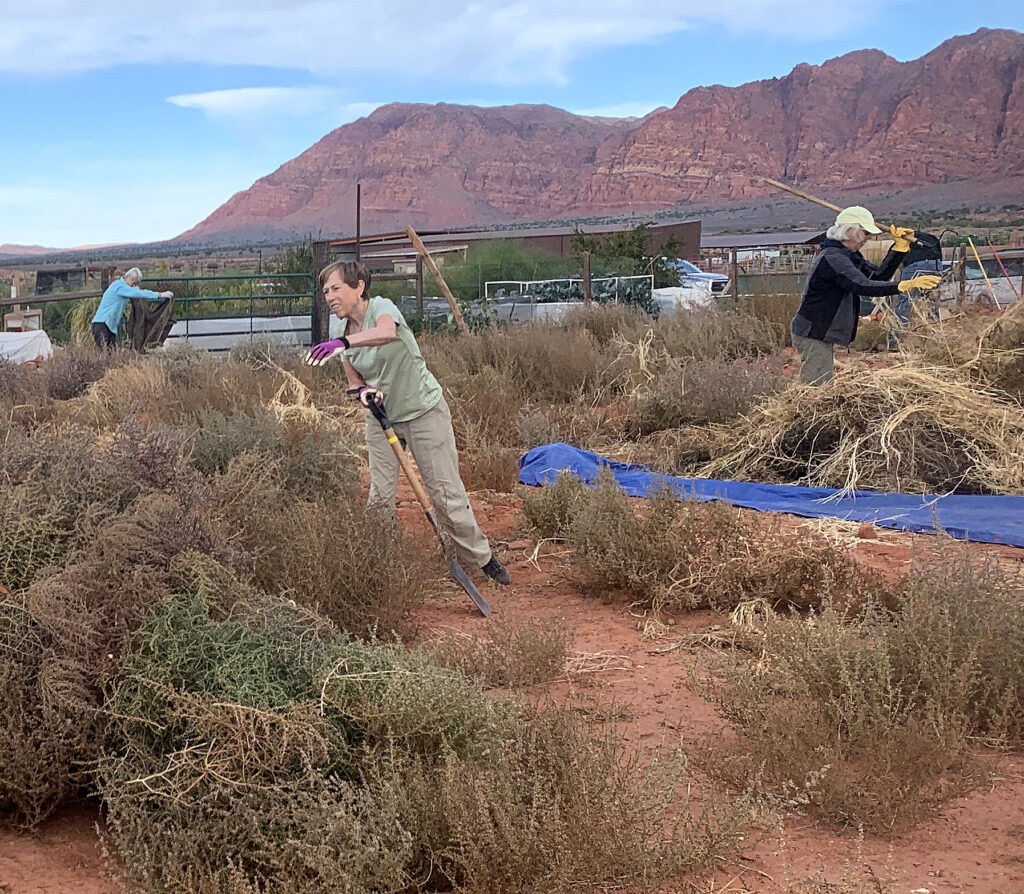Progress in Progress: Planning for Safety and Sustainability
With the review and approval of the Architectural Control Committee (ACC), the Landscaping Committee, and homeowners whose properties contain invasives, the Desert Preservation Initiative (DPI) is poised to begin its first tamarisk removal project in the coming weeks.
“Careful planning and community cooperation are key to our moving forward,” says DPI President Chuck Warren. “To that end we have spent many hours meeting with anyone and everyone who has an interest in or who can provide expert advice on the best ways to reach our goal of preserving the natural habitat in Kayenta.”
Central to finding the way forward has been creating detailed plans for the safety of volunteers and insuring minimal impact on the environment and homeowner properties. Cuttings and trunks and branches will either be chipped on site or hauled away for chipping. A detailed ingress and egress plan will specify how and where volunteers will enter the property to protect existing plants.
Each site plan is created in consultation with and signed by the homeowner, spelling out procedures, the use of tools and herbicide, and future plans for plant restoration and site monitoring. A written site description details slopes and grades, soil type and moisture levels, possible erosion concerns, and the size and number of tamarisk and other invasives present as well as native plants on the site. DPI also commits to working with homeowners and the ACC on replanting plans.
Dave Tall is one Kayenta resident who has long been aware of the issues created by invasive species. “Over the years, articles about salt cedar/tamarisk as an invasive plant in Southwest have caught my attention. I raise the subject about the salt cedars often while talking with friends and neighbors.
“The piece in the Shonto Point Winter newsletter, ‘Tamarisk the Terrorist’ was very informative,” he says. “After reading the article and noticing several tamarisk on my property, I started pruning branches. The pruning is messy, laborious and disposal of the cuttings difficult,” Tall says. And so, he was happy to be approached by DPI, whose members will be “spearheading the removal of tamarisk from my property. I have learned so much from the DPI team; I am looking forward to volunteering to help with other neighborhood salt cedar projects.”
Kay Hodson is another Kayenta resident who is grateful for the assistance of DPI. “Shortly after moving to Kayenta from the east coast, I discovered that the trees that I thought were so beautiful were the dreaded invasive tamarisk trees,” she says. “After assessing the situation and doing some online research, I found out that there was no way that I could remove them from the wash by myself.”
“Working with DPI has been heaven sent,” Hodson continues. “They’ve formed a team of very knowledgeable people from various backgrounds and they’re enthusiastic. I can’t imagine what it took for them to create DPI, but I am extremely grateful and I’m looking forward to working with them to remove the tamarisk from the wash.
“I suggest that anyone that wants to see how destructive tamarisk are to take a short walk into the washes off Kwavasa and see for themselves.”
“Our goal is to create a measured, incremental process where everyone feels involved in the discussions and comfortable with the plans going forward,” says botanist Terrence Walters, DPI secretary. “Our goal is sustainability on every level, from the impact of our work to building collegial relationships with the community.
